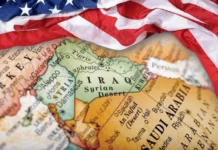Good Morning ,
mBridge and the Future of Finance: From BRICS Experiment to Global Dialogue
The Global South tests a new financial backbone — but will it build cooperation or confrontation?
From Pilot to Power Shift
- Launched by China, Hong Kong, Thailand, UAE, and later Saudi Arabia, mBridge has evolved from an experiment into a geopolitical tool.
- With validator nodes, live transactions, and integration potential with India’s UPI, Indonesia’s QRIS, and Brazil’s Pix, it promises scale unlike earlier CBDC pilots (Dunbar, Jura).
- The question: Will BIS step back, leaving governance in BRICS hands, or will it become a truly global framework?
Geopolitical Weight of BRICS + Gulf
- BRICS economies bring sheer market size and demand for alternatives to dollar-based trade.
- Saudi Arabia’s entry links the project to energy trade — a direct challenge to petrodollar dominance.
- Interoperability gives mBridge an edge, turning regional payment systems into a global settlement layer.
Private Players and Global Stakes
- Visa and Mastercard’s possible inclusion adds scale, fraud prevention, and consumer reach.
- But it also raises sovereignty and trust questions: Will Global South nations accept U.S. corporations shaping their CBDC future?
- If successful, mBridge could bypass SWIFT, reduce reliance on the dollar, and give BRICS-aligned nations financial autonomy in trade.
Financial Inclusion and Digital Trade
- CBDCs via mBridge could bank the unbanked (1.6 billion people), lower remittance costs, and streamline migrant worker payments.
- Use cases go beyond trade: NFTs, in-game economies, digital art, carbon credits — all need efficient cross-border settlement.
- By embedding these flows in a federated CBDC, mBridge could become the backbone of the digital economy.
A Bridge or a Fault Line?
- Brookings and Chatham House stress cooperative governance. If adopted, mBridge could create shared global standards.
- But if BRICS uses it as a financial weapon, it may harden blocs and accelerate confrontation.
- Either way, mBridge is no longer just about efficiency — it’s about who writes the rules of money in the digital era.
Why This Matters
mBridge crystallizes the larger struggle you’ve been tracking: finance, trade, and tech are converging into a new architecture.
- For the Global South, it’s about inclusion and sovereignty.
- For the U.S. and allies, it’s about retaining dominance through the dollar and SWIFT.
- The choice is stark: cooperation or polarization.
This is not just politics — it’s global finance restructuring before our eyes.
@ Newshounds News™
Source: Modern Diplomacy
~~~~~~~~~
Russia, NATO, and the End of Arms Control: A Geopolitical Turning Point
Putin signals willingness to extend New START, but escalating NATO tensions suggest the end of the post-Cold War security framework.
Russia Floats New START Extension
President Vladimir Putin proposed a one-year extension of the New START Treaty—currently set to expire in February 2026—if Washington reciprocates. This would temporarily preserve the only arms-control agreement still in force, capping each side’s nuclear warheads at 1,550.
Putin’s offer comes with a warning: without mutual restraint, the last guardrail on nuclear stability collapses. He framed it as both a diplomatic gesture and a test of U.S. seriousness.
A Tactical Pause, Not Peace
While Moscow signaled it will voluntarily adhere to New START limits for one year after 2026, Putin emphasized that Western hostility has already dismantled most of the arms-control architecture. Russia, he insisted, is prepared to counter threats with “military-technical measures” if diplomacy fails.
This is less about cooperation and more about buying time. With Ukraine unresolved and NATO encroachment perceived as rising, Russia is positioning the treaty as leverage—while accelerating its weapons modernization.
NATO Airspace Clashes Intensify
The diplomatic track coincides with escalating military tension:
- Estonia and Poland accused Russia of multiple airspace violations.
- NATO jets intercepted Russian fighters, prompting Article 4 consultations.
- Poland even shot down Russian drones, raising the risk of direct conflict.
Trump warned of “big trouble” if the violations continue, while his ambassador to the UN, Mike Waltz, vowed the U.S. would “defend every inch of NATO territory.”
Geopolitical Stakes at the UN
These clashes played out as world leaders convened at the United Nations. Ukrainian President Volodymyr Zelensky called for “powerful pressure” on Russia, while Trump prepared a major speech framing his foreign policy as the “renewal of American strength.”
The timing underscores the dual track: Moscow dangles limited arms-control cooperation even as it probes NATO’s defenses, while Washington sharpens rhetoric and lines up allies for potential escalation.
Why This Matters
The unraveling of arms control, the hardening of NATO’s stance, and Russia’s dual strategy of diplomacy plus deterrence show that we’ve entered a new era of strategic instability. Unlike the Cold War, this instability overlaps with global de-dollarization, sanctions warfare, and competing digital currency systems. Military stability and monetary stability are both eroding simultaneously.
This is not just politics — it’s global finance restructuring before our eyes.
@ Newshounds News™ Exclusive
Source: Modern Diplomacy, Modern Diplomacy, Newsweek, Newsweek
~~~~~~~~~
Seeds of Wisdom Team RV Currency Facts Youtube and Rumble
Newshound’s News Telegram Room Link
Follow the Gold/Silver Rate COMEX
Follow Fast Facts
Seeds of Wisdom Team™ Website





